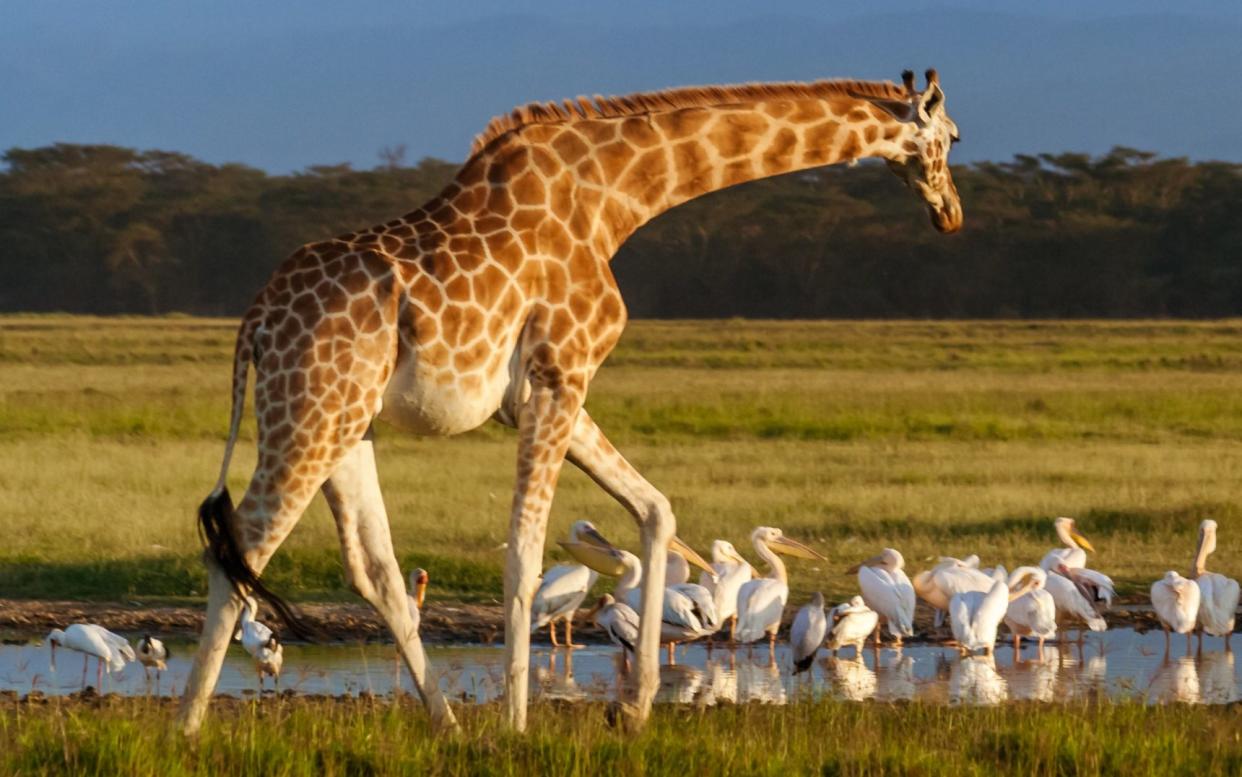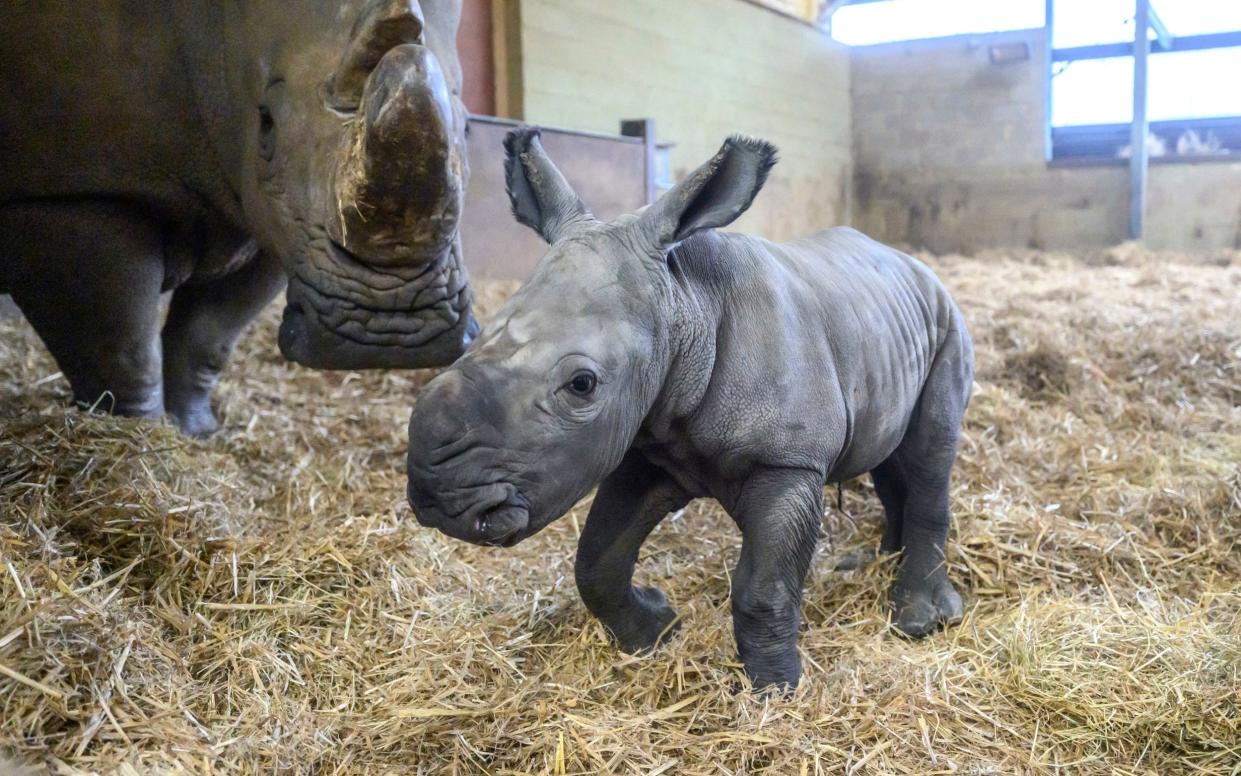Watch: Endangered giraffe born at Chester Zoo
When you’re the world’s tallest animal, having a head for heights is a requirement, even during birth.
A rare Rothschild’s giraffe calf was filmed on CCTV dropping several feet head-first as it was born at Chester Zoo on Tuesday night.
Despite being a newborn, the calf is already 6ft tall and weighs 11 stone. It plunged safely from mum Orla onto a bed of soft straw, before stumbling to its feet for the first time.
Chester Zoo is yet to determine if the two-day old is male or female, but it is likely to grow to around 18 feet tall, and weigh 157 stone.
Rosie Owen, one of the zookeepers at Chester, said: “Giraffes give birth standing up so they really do enter the world in dramatic fashion!
“Orla’s calf landed with quite a bump when it fell around six feet onto the floor, but this is totally normal and is actually a really important part of the birth process – the impact from the fall stimulates the calf and encourages it to take its very first breath.”
Rothschild’s are one of the most endangered subspecies of giraffe and one of the world’s most vulnerable species.
Although tens of thousands were once found throughout Kenya, Uganda and Sudan, their population has suffered a 90 per cent decline in recent years as a direct result of poaching and habitat loss.
Recent estimates suggest that fewer than 2,500 individuals remain in the wild, and experts at Chester are working on the ground in Uganda to help monitor and safeguard the animals in the wild and increase the population through breeding programmes.

Rothschild’s giraffes are named after the zoologist Lord Walter Rothschild, founder of the National History Museum at Tring in Hertfordshire.
Roughly one-third of the surviving population of Rothschild’s giraffes live in zoos.
In the past, giraffes were hunted for their tails, which were used as good-luck charms, sewing thread and even fly swats, although the main threats to the species currently are loss of habitat and poaching.

Zookeepers at Whipsnade Zoo also announced on Friday that a rare southern white rhino calf was born to mum Jaseera and dad Sizzle.
According to the International Union for Conservation of Nature, there are 10,000 mature southern white rhinos left in the wild, with numbers continuing to fall.
The baby boy was born after a very quick four-minute labour and began to walk within two hours of birth.
Mark Holden, Whipsnade’s rhino keeper, said: “Southern white rhinos are born with over-sized, rubbery feet, which they ‘grow into’, so the calf was understandably quite wobbly when he first started to walk. But he’s a fast learner and a week later he is now zooming around.
“This is Jaseera’s first baby, and it’s been great to see her maternal instinct kick in. She has been nursing the calf and has been very protective of him. All the signs of a perfect rhino mum.”
Rhinos are a threatened species because it is believed their horns have healing powers.Last year in South Africa alone around 500 white rhinos were killed for their horns.


